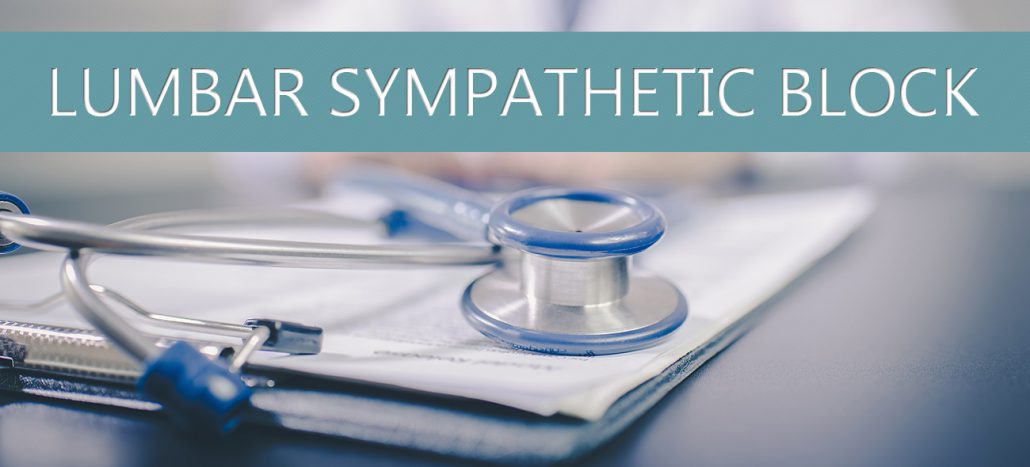Lumbar Sympathetic Block
Description
A lumbar sympathetic block is an injection of local anesthetic into the front of the neck that is typically ordered by your doctor for pain located in the back and legs caused by sympathetically maintained pain (reflex sympathetic dystrophy), causalgia(nerve injury), herpes zoster (shingles), or intractable angina. Lumbar sympathetic blocks are also used to see if blood flow can be improved in circulation problems. Lumbar sympathetic blocks may be therapeutic and/or diagnostic. One of three things may happen. 1. The pain does not go away and there is other evidence of a sympathetic block – the pain is not responsive to sympathetic blocks -this is of diagnostic value. 2. The pain does not go away and there is not good evidence of a sympathetic block – the block is a technical failure. 3. The pain goes away after the injection and stays away longer than the life of the local anesthetic – the block was of therapeutic value. The procedure will most likely have to be repeated to get long lasting benefit. The spacing of injections will be based on how long the pain relief is between injections (usually you will get longer benefit after each injection).
Note: The procedure can not be performed if you have an active infection, flu, cold, uncontrolled cough, fever, very high blood pressure or if you are on blood thinners. Please make your doctor aware of any of these conditions. This is for your safety!
Risks of the procedure
The risks of the procedure, though infrequent, include seizure – if the medication is injected into a blood vessel; kidney damage; spinal or epidural block (temporary weakness or numbness from the waist down); allergy to medication, nerve damage, and bruising at the injection site. There are some expected changes that result from blocking the sympathetic nerves. These changes last for the life of the local anesthetic (about 4 – 6 hours). They include a temperature increase on the injected side. You may also get numbness. Most people say the stinging/burning of the numbing medicine is the most uncomfortable part of the procedure though every person’s response to any procedure is individual.
The procedure
A consent form will be signed, your vital signs checked and an IV started. Skin temperature monitors will be placed on both your feet. You will be asked what your pain score is on a scale of 0 – 10. The procedure will be done with you lying on your stomach with fluoroscopy. Your back will be cleansed with an antiseptic soap. The skin is anesthetized (numbed) with a local anesthetic. This is felt as a stinging or burning sensation. Using x-ray guidance, needles are then advanced to the appropriate locations. Once the needle is in the proper location local anesthetic is injected through the needle and the needle are removed. Your skin will be cleansed and bandages will be applied. (The bandages can be removed on the next morning). You will be watched during that time. Your doctor will be checking to see if the expected changes take place as well as see what effect if any there is on your pain. Your pulse and blood pressure will be checked. If all is well, your intravenous will be removed. You doctor will authorize your discharge when you’re ready and your ride is present.
After the procedure
Your back pain may be improved immediately after the injection from the local anesthetic. It is important to keep track of how you feel for the remainder of the day. The steroid, when used, takes two or three days to have on effect in most people and peaks in about two weeks. Some local tenderness may be experienced for a couple of days after the injection. Using an ice pack three or four times a day will help this. You may take your usual pain medications as well after the injection. It is important that you keep track of the amount of pain relief you received as well as how long the pain relief lasted.
Restrictions
You may not drive for the remainder of the day after the procedure. It is best for an adult to be present to drive you home or to go with you in a taxi or on public transportation. This is for your safety.
Notify your doctor
If you experience new shortness of breath 24 – 48 hours after the injection or any signs of infection in the area of the injection, you should call your doctor right away at: 301-530-7303 or go to the nearest emergency room.

